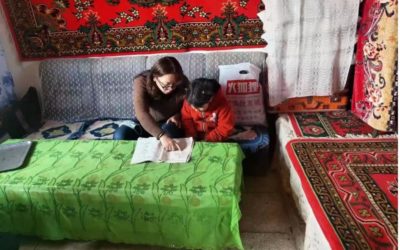Maritime rescuer worries job exposes him to coronavirus
China’s Rescue and Salvage team helps crews during height of COVID-19 outbreak
By Bella Gao
March 2020
Driving home from work, Zhen Li worried he might have caught the coronavirus and didn’t want to infect his family. After a phone call with his mother, he eventually decided to return home and quarantine himself.
On March 20, Li’s team rescued a Fillipino crew member on the Hong Kong cargo ship Deryoung Sunnysky who had an acute appendicitis in Zhuhai Wanshan Island waters. After sending him to the hospital, Li was told that the temperature of the rescued man was 37.3 degrees Celsius, a symptom coronavirus.
Li and his colleagues got nervous, though they knew that acute appendicitis with elevated temperatures is common.
“At this particular time, we don’t dare take it lightly,” he said.
Li, 24, has been a rescue commander with China’s Ministry of Transport’s First Rescue and Salvage Flight Team in the South China Sea for two years. But during the coronavirus outbreak, rescuing people, including many from highly-infected countries, have put rescuers on alert.
Since the outbreak, the rescue team has carried out nine rescue operations, many over the Chinese New Year holiday in February during the height of the outbreak.
Li’s team had their temperatures taken every day and received prevention materials such as masks, alcohol and hand sanitizer.
Li sat in the empty office and watched the Spring Festival party on the computer. Though feeling sorry not to be with family during the festival, he said, “I did what I could and I felt I made a contribution to the society”.
In the latest rescue, it was nearly the end of the work day when Li got the call for help. He participated in directing the rescue operation, including reporting the rescue mission, dispatching rescuers and arranging the entry and settlement of the rescued.
In March, the majority of coronavirus cases in Guangdong, where Li mostly works, were imported, according to the Guangdong Health Commission. Nationwide, imported cases only accounted for around 15% of all confirmed diagnoses in the same month, according to the National Health Commission.
“Getting a foreign patient without his accurate health information and itinerary out of danger and sending him to the hospital meanwhile avoiding possible infections is a difficult task for us,” Li said.
Unlike the days before the outbreak, in this case he checked with the ship’s company about all crew itineraries and health conditions the last 30 days. Rescuers were fully equipped with protective outfits, such as white protective clothing, masks, googles and gloves. Maintenance staff disinfected rescuers on their return and sterilized helicopters.
All rescuers were required to quarantine themselves in their office until the rescued got a coronavirus test result. But because Li managed the operation, rather than work as a rescuer, he was allowed to go home because he was not considered to have been in “close contact.”
“If the crew was really infected, I was afraid of spreading the virus to my family,” he said.
His mother said she wasn’t afraid because he didn’t have direct contact with the patient and he wore a mask the whole time. “Even if he got sick, we didn’t want to leave him alone, though I knew it’s risky,” she said.
At 9pm, the test came back. The man tested negative for coronavirus. Li breathed a sigh of relief and ended his home quarantine.

If the crew was really infected, I was afraid of spreading the virus to my family.

Burned out Chinese teachers struggle with school responsibilities
It’s after 10pm and the city streetlights have long been on in southeastern China. Melisa returns home, exhaustion written on her face. All she wants is a shower
The unseen creators: how AI powers the mini-games becoming online hits in China
In three quick strokes, a blue-haired swordsman unleashes curved, shining blue blades for an attack that appears effortless as it takes down three masked opponents. Moments later, the swordsman stands still with a steely gaze and a calm face.
Loneliness drives new ‘accompanying economy’
Solo travelers hire “photo companions” for travel pics and conversation









